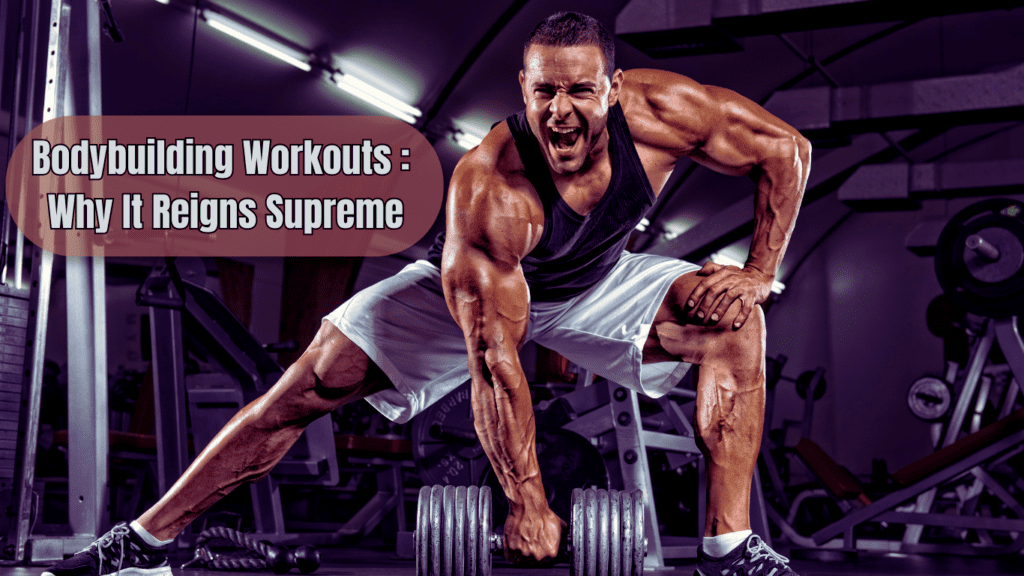Transformative Powerlifting Workout for Beginners
In this article, we’ll dive into a powerlifting workout for beginners, revealing how to build strength, boost confidence, and transform your fitness journey from the ground up.
Welcome to the world of powerlifting , where strength meets transformation, and goals become achievements. If you’ve ever felt like you were just skimming the surface of your fitness journey, powerlifting might be the missing piece you’ve been searching for.
Powerlifting isn’t just about lifting weights; it’s about pushing boundaries, both physical and mental. It’s a sport that celebrates strength in its purest form, focusing on three primary lifts: squat, bench press, and deadlift. But don’t let the word “sport” intimidate you – you don’t need to be a professional athlete to reap the benefits of a powerlifting workout.
So, why should beginners dive into the world of powerlifting? The answer lies in its transformative power. Picture this: with each rep, you’re not just lifting weights; you’re lifting doubts, insecurities, and limitations. You’re sculpting not only your body but also your mindset. And that, my friend, is where the magic happens.
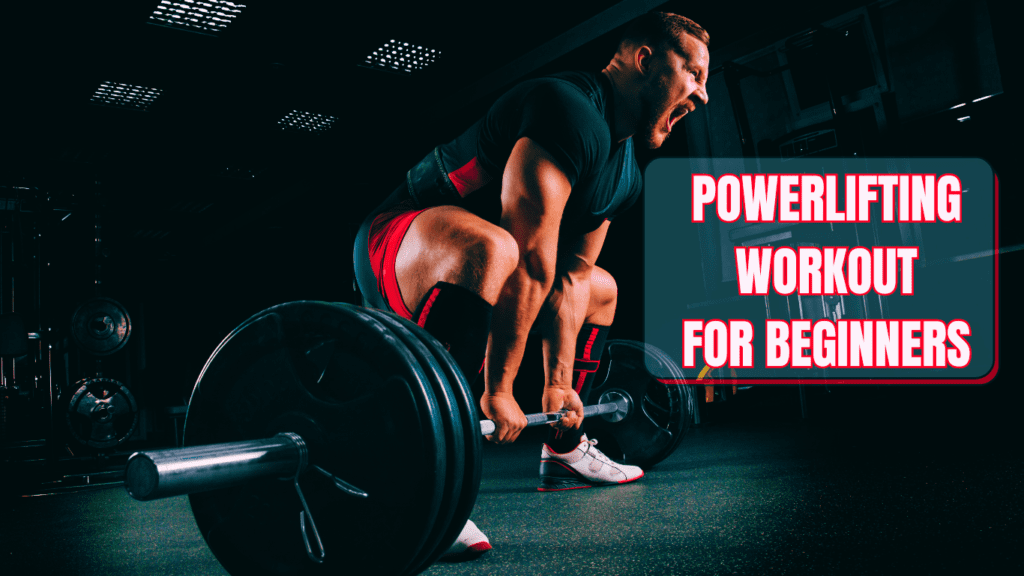
Let’s talk benefits. First and foremost, powerlifting is a surefire way to build strength – and not just any strength, but functional, real-world strength that you can carry with you in all aspects of life. From lifting groceries to chasing after your kids, you’ll notice the difference in your day-to-day activities.
But it’s not just about physical gains. Powerlifting has a way of boosting confidence like nothing else. There’s something incredibly empowering about setting a new personal record or conquering a lift that once seemed impossible. With each milestone, you’ll find yourself standing a little taller, both in the gym and beyond.
And let’s not forget about the sense of community that comes with powerlifting. Whether you’re lifting alongside seasoned veterans or fellow beginners, there’s a camaraderie that binds powerlifters together. You’ll find encouragement, support, and maybe even a little friendly competition along the way.
Subscribe And Get Our Free E-Book:Unlocking The Power Of Nutrition-Supplements, Substitutes, and Superfoods!
Now, you might be wondering, “But isn’t powerlifting only for the super strong?” Absolutely not. In fact, powerlifting is incredibly beginner-friendly, with ample opportunities for progression and customization. Whether you’re brand new to lifting or just looking to switch up your routine, there’s a place for you in the powerlifting world.
So, how do you get started? It all begins with mastering the basics. Focus on perfecting your form and technique before worrying about the weight on the bar. Start with lighter weights and gradually increase as you feel more comfortable. And remember, Rome wasn’t built in a day – progress takes time, so be patient with yourself along the way.
From Beginner Basics to Taylor Atwood’s Inspiring Journey
Powerlifting, as a sport, revolves around the mastery of three core lifts: the squat, bench press, and deadlift. These lifts are not just exercises; they form the foundation of powerlifting competitions worldwide. Powerlifters train rigorously to increase their strength and proficiency in these lifts, aiming to lift the heaviest weights possible.
The squat, which targets the lower body muscles like the quadriceps, hamstrings, and glutes, is essential for building overall lower body strength and power. The bench press primarily works the chest, shoulders, and triceps, crucial for developing upper body strength. The deadlift engages muscles throughout the body, including the back, legs, and grip, making it a comprehensive strength-building exercise.
These lifts are the mainstay of powerlifting because they target multiple muscle groups simultaneously, allowing lifters to lift heavy weights and build maximal strength. Powerlifting workout for beginners often revolve around these core lifts, gradually increasing weight and intensity to stimulate strength gains over time.
While powerlifters primarily focus on these core lifts, they may also incorporate accessory exercises to address specific weaknesses and improve overall performance. These exercises could include variations of the main lifts or isolation exercises targeting individual muscle groups.
What sets powerlifting apart from other forms of strength training is its emphasis on maximal strength. Unlike bodybuilding, which focuses on muscle size and aesthetics, powerlifting prioritizes lifting the heaviest weight possible for a single repetition. This emphasis on pure strength makes powerlifting an effective training method for individuals looking to increase overall strength and power.
Moreover, powerlifting fosters a sense of inclusivity and community. Regardless of age, gender, or athletic background, powerlifters come together to support and encourage one another. The camaraderie within the powerlifting community creates a supportive environment where lifters motivate each other to push their limits and achieve their goals.
Now, let’s delve into the myriad benefits that powerlifting offers, especially for beginners. Powerlifting workout for beginners provide a comprehensive strength-building regimen that targets all major muscle groups. Through consistent training and progression, beginners can expect to see significant increases in strength, muscle mass, and overall fitness.
Physically, powerlifting promotes muscle growth, fat loss, and improved body composition. By engaging multiple muscle groups simultaneously, powerlifting workouts stimulate muscle hypertrophy and increase metabolism, leading to greater calorie expenditure and fat loss.
Furthermore, powerlifting offers numerous mental benefits. Setting and achieving goals in the gym builds confidence and self-efficacy, enhancing overall well-being. The discipline required to stick to a structured training program cultivates mental toughness and resilience, qualities that are invaluable both inside and outside the gym.
Now, let’s draw inspiration from Taylor Atwood’s remarkable success story in powerlifting. Taylor’s journey from a promising athlete to a world-class powerlifter is a testament to the transformative power of dedication and perseverance.
Taylor’s Success Story:
Taylor Atwood’s journey into the world of powerlifting began in 2014. After finishing a training camp stint with the BC Lions, he sought a new competitive outlet that would challenge him both physically and mentally. With his explosive athletic ability, Taylor entered the realm of powerlifting, where he discovered his true potential lay in mastering the core lifts of squat, bench press, and deadlift.
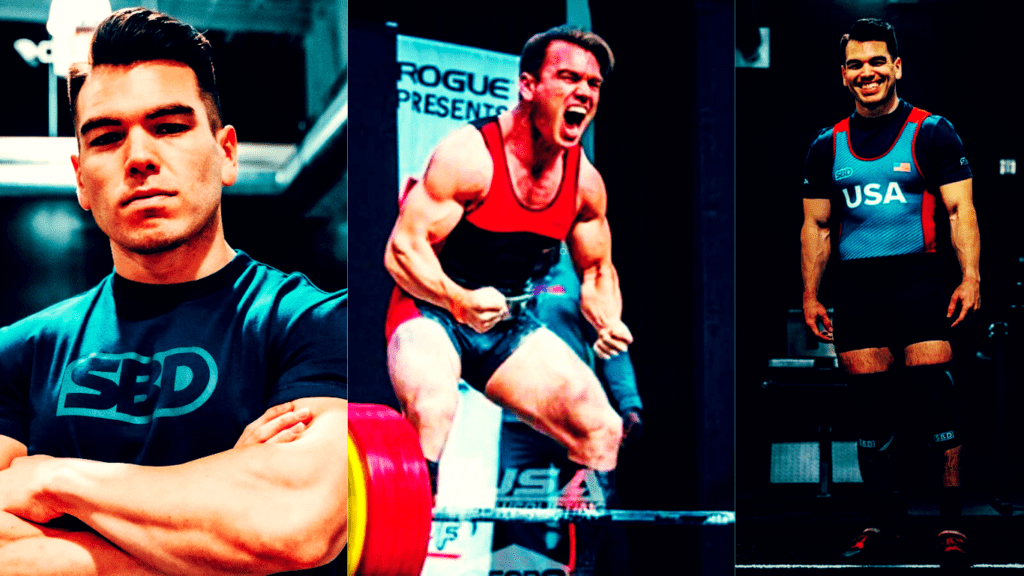
Under the guidance of his coach, Taylor embarked on a journey to dominate the sport. His starting numbers were impressive, but he knew he needed to refine his technique and push his limits to reach the pinnacle of powerlifting success. With unwavering determination, Taylor set his sights on winning Raw Nationals and setting national records.
Despite facing setbacks and injuries along the way, Taylor remained undeterred. With the support of his coach and the powerlifting community, he persevered through adversity, pushing himself to new heights of strength and performance.
In 2015, Taylor showcased his progress at the Arnold Classic, where he narrowly missed achieving his goals. However, this setback only fueled his determination to succeed. Taylor continued to train relentlessly, refining his technique and honing his skills in preparation for future competitions.
In 2016, Taylor made his debut at the World Championship, where he narrowly missed claiming the title but showcased his potential as a force to be reckoned with in the world of powerlifting. Over the years, Taylor continued to compete at the highest level, overcoming injuries and setbacks with resilience and tenacity.
In 2018, Taylor’s hard work and dedication paid off as he achieved his lifelong dream of becoming a World Champion. His victory was not just a personal triumph but a testament to the power of perseverance and determination in the face of adversity.
Today, Taylor Atwood stands as a shining example of what it means to chase your dreams and never give up. His journey from a promising athlete to a world-class powerlifter is a source of inspiration for aspiring lifters everywhere, reminding us that with hard work, dedication, and a never-say-die attitude, anything is possible in the world of powerlifting.
Powerlifting For Beginners-First Meet Video
Mastering Powerlifting Workout for Beginners: Building Strength Safely and Effectively
Embarking on a journey into powerlifting is not just about lifting heavy weights; it’s about understanding your body, building strength, and embracing a lifestyle of fitness. For beginners, diving into the world of powerlifting can be both exciting and intimidating. However, with the right guidance and approach, anyone can start their powerlifting journey on the right foot.
Before delving into the nitty-gritty of powerlifting workouts for beginners, let’s emphasize the importance of proper warm-up and stretching. Warming up effectively prepares your body for the intense workout ahead, loosening tight muscles and increasing blood flow to the working muscles. Spend around 10-15 minutes engaging in dynamic stretches and light cardio to elevate your heart rate and warm up your muscles.
Now, let’s dive into the basic powerlifting workout routine for beginners. This routine typically revolves around the three core powerlifting lifts: squat, bench press, and deadlift. These compound movements target multiple muscle groups simultaneously, making them incredibly efficient for building overall strength.
For beginners, it’s crucial to start with lighter weights and focus on mastering proper form and technique before gradually increasing the load. Begin each workout session with 2-3 sets of each exercise, aiming for 8-12 repetitions per set. As you become more comfortable with the movements, you can progressively increase the weight while decreasing the reps to build strength.
When performing the squat, ensure that your feet are shoulder-width apart, toes pointed slightly outward. Keep your chest up, back straight, and lower yourself down by bending your knees until your thighs are parallel to the ground. Push through your heels to return to the starting position, engaging your glutes and hamstrings.
Moving on to the bench press, lie flat on a bench with your feet planted firmly on the ground. Grip the barbell slightly wider than shoulder-width apart, lower it to your chest in a controlled manner, and then press it back up, extending your arms fully without locking your elbows. Keep your back arched slightly throughout the movement to maintain stability.
Lastly, the deadlift is performed by standing with your feet hip-width apart, toes pointing forward. Bend at your hips and knees to grip the barbell with an overhand grip, hands just outside your knees. Keep your back flat, chest up, and drive through your heels as you lift the barbell off the ground, extending your hips and knees until you’re standing upright.
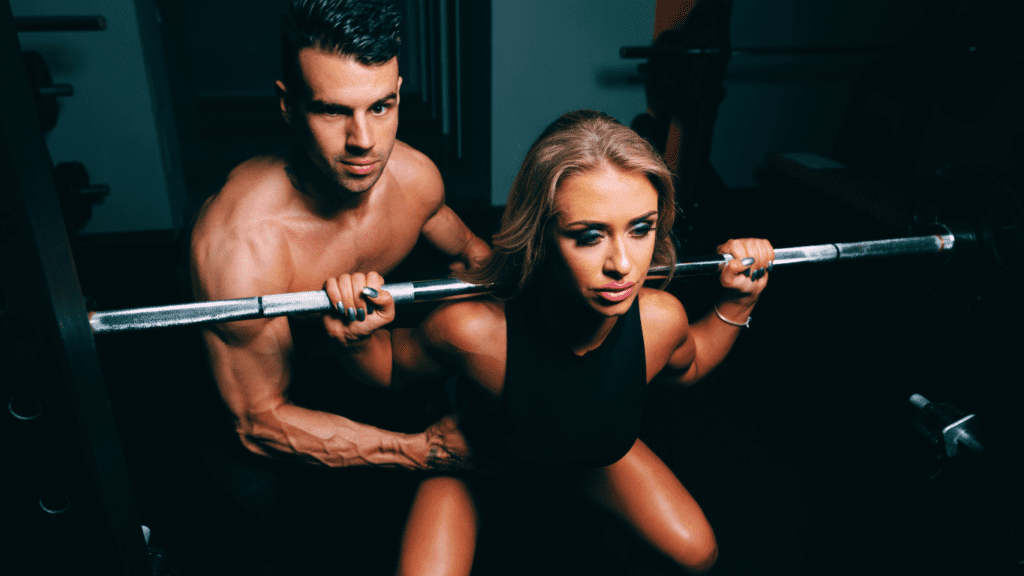
As you progress in your powerlifting journey, remember to prioritize safety and proper technique above all else. Avoid the temptation to lift heavier weights at the expense of sacrificing form, as this increases your risk of injury. Listen to your body, and if something feels off, don’t hesitate to lower the weight or seek guidance from a certified coach.
Powerlifting Workout for Beginners: A 6-Month Program
Powerlifting Training Progression: A Detailed Guide for Beginners
To help you understand how to progress in your powerlifting journey, here is a detailed chart outlining the different phases of training for beginners. This guide focuses on key techniques, primary goals, and essential tips for each phase.
| Phase | Duration | Primary Focus | Key Techniques | Goals | Additional Tips |
|---|---|---|---|---|---|
| Foundation | Months 1-2 | Mastering Basic Form | Light Weights, High Reps | Build Form & Technique | – Focus on mobility and flexibility.<br>- Use mirrors or video to check form.<br>- Seek feedback from a coach or experienced lifter. |
| Strength Build | Months 3-4 | Increasing Load Gradually | Moderate Weights, Moderate Reps | Gain Strength & Confidence | – Introduce accessory exercises.<br>- Start tracking your progress.<br>- Incorporate rest days to prevent overtraining. |
| Intensity Boost | Months 5-6 | Higher Intensity Workouts | Heavy Weights, Low Reps | Maximize Strength Gains | – Focus on compound movements.<br>- Use advanced techniques like pause reps.<br>- Ensure proper warm-up and cool-down routines. |
Powerlifting Workout for Beginners: A 6-Month Program
Month 1-2: Building a Solid Foundation
Exercise 1: Squat
- Begin with 3 sets of 8-10 repetitions.
- Focus on mastering proper form and technique.
- Aim for controlled movements and full range of motion.
- Gradually increase weight as you become more comfortable.
Exercise 2: Bench Press
- Start with 3 sets of 8-10 repetitions.
- Pay attention to hand placement and grip width.
- Keep elbows tucked and lower the barbell to chest level.
- Use a spotter for safety, especially when lifting heavier weights.
Exercise 3: Deadlift
- Perform 3 sets of 5-8 repetitions.
- Start with lighter weights to perfect your form.
- Engage your core and hinge at the hips while maintaining a straight back.
- Focus on lifting the weight with your legs and not your lower back.
Month 1-2: Building a Solid Foundation
Exercise 1: Squat
- Begin with 3 sets of 8-10 repetitions.
- Focus on mastering proper form and technique.
- Aim for controlled movements and full range of motion.
- Gradually increase weight as you become more comfortable.
Exercise 2: Bench Press
- Start with 3 sets of 8-10 repetitions.
- Pay attention to hand placement and grip width.
- Keep elbows tucked and lower the barbell to chest level.
- Use a spotter for safety, especially when lifting heavier weights.
Exercise 3: Deadlift
- Perform 3 sets of 5-8 repetitions.
- Start with lighter weights to perfect your form.
- Engage your core and hinge at the hips while maintaining a straight back.
- Focus on lifting the weight with your legs and not your lower back.
Month 3-4: Increasing Intensity
Exercise 1: Squat
- Progress to 4 sets of 6-8 repetitions.
- Gradually increase the weight each week to challenge yourself.
- Concentrate on explosiveness during the upward phase of the movement.
- Incorporate pause squats to improve strength out of the hole.
Exercise 2: Bench Press
- Advance to 4 sets of 6-8 repetitions.
- Continue to refine your technique and increase weight progressively.
- Experiment with different grip widths to target different muscle groups.
- Introduce incline or decline bench variations for muscle balance.
Exercise 3: Deadlift
- Increase to 4 sets of 4-6 repetitions.
- Focus on maintaining a strong grip and tight core throughout the lift.
- Incorporate deficit deadlifts to improve pulling power off the floor.
- Consider using straps for heavier sets to avoid grip fatigue.
Month 5-6: Fine-Tuning and Progression
Exercise 1: Squat
- Aim for 5 sets of 4-6 repetitions.
- Implement tempo squats to enhance control and stability.
- Gradually increase intensity by lifting closer to your one-rep max.
- Practice visualization techniques to mentally prepare for heavier lifts.
Exercise 2: Bench Press
- Perform 5 sets of 4-6 repetitions.
- Focus on bar speed and explosiveness off the chest.
- Incorporate paused bench press to develop strength in the bottom position.
- Experiment with different barbell speeds to find your optimal tempo.
Exercise 3: Deadlift
- Complete 5 sets of 3-5 repetitions.
- Push your limits with heavier weights while maintaining proper form.
- Introduce Romanian deadlifts to target the posterior chain.
- Utilize rest-pause sets to increase time under tension and build muscle endurance.
Powerlifting Workout for Beginners guidlines
- Start each workout with a thorough warm-up to increase blood flow and prevent injury.
- Incorporate dynamic stretches and mobility exercises to improve flexibility and range of motion.
- Rest for 1-2 minutes between sets to allow for adequate recovery.
- Listen to your body and adjust weights accordingly to avoid overexertion or injury.
- Stay consistent with your training schedule and prioritize proper nutrition and rest for optimal recovery.
With dedication and persistence, you’ll soon witness remarkable progress in both strength and confidence. Remember, the journey to becoming a seasoned powerlifter begins with a single lift. So embrace the challenge, trust the process, and enjoy the rewarding experience of mastering the art of powerlifting.
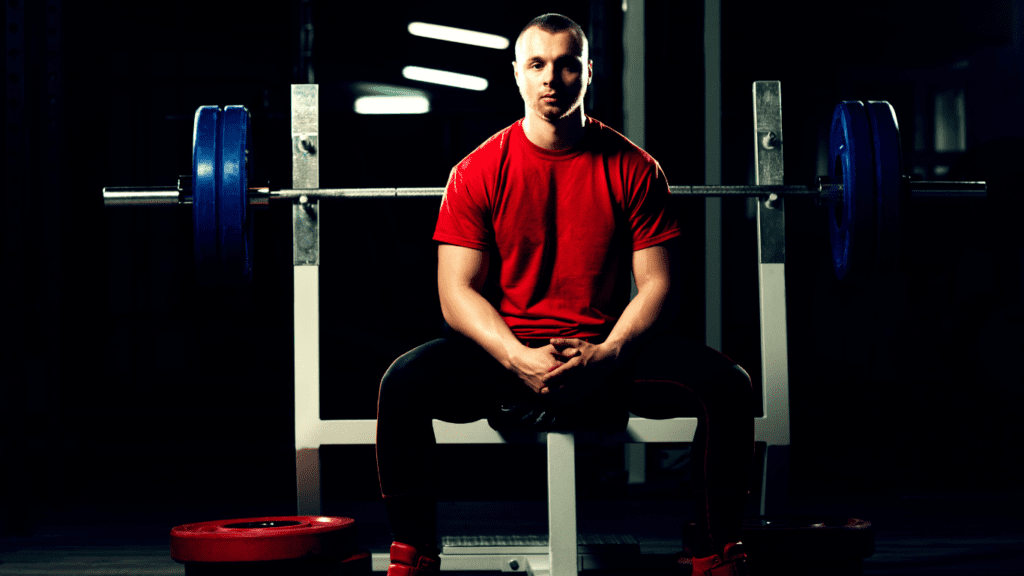
Nutrition, Recovery, and Motivation Needed
Embarking on a powerlifting workout for beginners journey is both exhilarating and filled with potential for growth. As you delve into the world of powerlifting workouts, understanding the vital role of nutrition, recovery, and motivation is key to unlocking your full potential and achieving remarkable results. Let’s dive into how you can fuel your body, prioritize recovery, overcome challenges, and embrace the transformative journey of powerlifting.
Nutrition plays a critical role in supporting your powerlifting performance and facilitating recovery. To optimize your workouts, focus on consuming a balanced diet rich in protein, carbohydrates, and healthy fats. Protein is essential for muscle repair and growth, so include sources like lean meats, eggs, dairy, and plant-based proteins in your meals. Carbohydrates provide the energy needed for intense lifting sessions, so incorporate whole grains, fruits, and vegetables into your diet. Additionally, healthy fats support overall health and hormone production, so include foods like nuts, seeds, avocados, and fatty fish.
In addition to fueling your body with the right nutrients, prioritizing rest, sleep, and recovery strategies is crucial for optimizing your powerlifting results. Aim for 7-9 hours of quality sleep each night to allow your muscles to repair and grow stronger. Incorporate rest days into your training schedule to prevent overtraining and reduce the risk of injury. Explore recovery strategies such as foam rolling, stretching, and massage to alleviate muscle soreness and improve flexibility. By taking care of your body inside and out, you’ll set yourself up for success in your powerlifting journey.
As you progress in your powerlifting journey, you may encounter common challenges such as training plateaus and self-doubt. Remember that setbacks are a natural part of the process and an opportunity for growth. Stay motivated by setting achievable goals, tracking your progress, and surrounding yourself with a supportive community of fellow lifters. When faced with obstacles, focus on finding solutions, adjusting your approach as needed, and staying committed to your goals. With perseverance and determination, you can overcome any challenge that comes your way.
It’s important to celebrate your progress and embrace the journey, no matter how small the victories may seem. Whether you add weight to the bar, hit a new personal best, or simply show up and give your best effort, every step forward is worth celebrating. Take pride in your accomplishments and acknowledge the hard work and dedication it took to get there. By cultivating a positive mindset and recognizing your achievements along the way, you’ll stay motivated and inspired to continue pushing your limits in powerlifting.
Powerlifting has the potential to be a transformative experience for beginners, both physically and mentally. By focusing onthe actual powerlifting workout for beginners , nutrition, recovery, and motivation, you can unlock your full potential and achieve remarkable results in the gym. Whether you’re brand new to lifting or a seasoned veteran, there’s always room to grow and improve in the sport of powerlifting. So, take the first step towards becoming a powerlifter today. Try out a powerlifting workout, join a local community, and experience the benefits firsthand. Your journey starts now – embrace the challenge, and let the gains begin!
Remember, your powerlifting journey is unique to you. We encourage you to share your experiences, questions, and triumphs in the comments section below. Let’s support each other on this empowering journey towards strength and growth.
Overcoming Powerlifting Challenges: Quick Tips for Beginners Chart
| Challenge | Description | Quick Tips | Extra Resources |
|---|---|---|---|
| Strength Plateaus | Difficulty increasing weights. | – Change exercises or rep schemes. – Add deload weeks. – Work on accessory lifts. | – Consult a coach. – Explore periodization techniques. |
| Poor Technique | Trouble with form and technique. | – Get feedback from a coach. – Record and review your lifts. – Practice with lighter weights. | – Use form-check apps. |
| Lack of Motivation | Difficulty staying motivated. | – Set small, achievable goals. – Find a workout partner. – Track and celebrate progress. | – Follow powerlifting blogs or social media. |
| Injury Prevention | Risk of injury from poor lifting. | – Warm up and cool down properly. – Include mobility work. – Focus on proper technique. | – Consult a physical therapist. |
| Nutritional Challenges | Struggling with diet and nutrition. | – Plan meals around workouts. – Prioritize protein and balanced macros. – Consider a nutritionist. | – Use meal planning apps. |
| Balancing Training | Managing powerlifting with other life commitments. | – Create a flexible training schedule. – Use time management strategies. – Communicate goals with family. | – Use productivity apps. |
Key Points:
- Strength Plateaus: Refresh your workout plan and focus on different exercises.
- Poor Technique: Regularly review your form and practice with light weights.
- Lack of Motivation: Set clear goals, find support, and track progress.
- Injury Prevention: Prioritize warm-ups, mobility, and proper form.
- Nutritional Challenges: Plan and balance your diet around workouts.
- Balancing Training: Manage your schedule to fit training with life demands.
Final Thoughts: Powerlifting Workout for Beginners—Your Journey Starts Here
As you embark on your powerlifting workout for beginners, it’s important to understand that this journey is more than just about building physical strength—it’s about cultivating a powerful mindset and embracing a lifestyle that champions perseverance, resilience, and continuous growth. The path ahead may seem daunting, but with every step you take, you’ll discover newfound confidence, inner strength, and a community of like-minded individuals who share your passion for self-improvement.
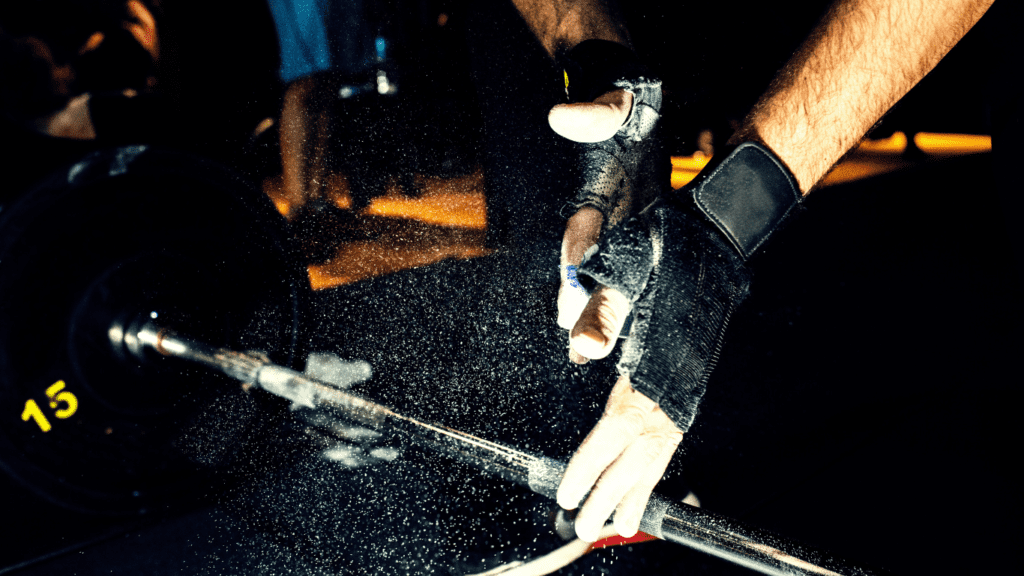
Powerlifting offers a unique blend of mental and physical challenges, pushing you to confront your limits and surpass them. Each lift is a testament to your determination, a tangible measure of the progress you’re making not only in the gym but in your life as a whole. When you commit to a powerlifting workout for beginners, you’re making a commitment to yourself—one that demands discipline, focus, and unwavering dedication.
It’s important to remember that progress in powerlifting, as in life, is not always linear. There will be days when the weights feel heavier, when motivation wanes, and when self-doubt creeps in. But it’s in these moments of struggle that your true character is forged. Every setback is an opportunity to learn, to adjust, and to come back stronger. The key is to stay patient, trust the process, and keep pushing forward, even when the results aren’t immediately visible.
One of the most rewarding aspects of powerlifting is the sense of accomplishment that comes with setting and achieving your goals. Whether it’s hitting a new personal record, mastering the form of a challenging lift, or simply showing up consistently for your workouts, every milestone is a victory worth celebrating. These achievements, no matter how small, build momentum and fuel your motivation to keep striving for more.
Beyond the personal growth and physical gains, powerlifting connects you to a vibrant and supportive community. You’ll find yourself surrounded by individuals who understand the dedication it takes to pursue this sport and who are eager to offer encouragement, share advice, and celebrate your successes. The camaraderie within the powerlifting community is unmatched, creating a sense of belonging that enhances your overall experience.
As you continue to progress in your powerlifting workout for beginners, it’s crucial to keep your long-term vision in mind. This is not just about lifting heavier weights—it’s about becoming the best version of yourself, both physically and mentally. Powerlifting teaches you the value of consistency, the importance of setting and pursuing goals, and the resilience needed to overcome obstacles. These lessons extend far beyond the gym, empowering you to tackle challenges in all areas of your life with confidence and determination.
So, why should you embrace the powerlifting lifestyle? Because it’s a journey that transforms you from the inside out. It’s about more than just building muscle—it’s about building character, grit, and an unshakeable belief in your own potential. The strength you gain from powerlifting is not just measured in pounds on the barbell; it’s reflected in your daily life, in the way you carry yourself, and in the confidence you exude.
Your powerlifting journey starts with that first step—the decision to commit, to show up, and to give it your all. Whether you’re just beginning or well on your way, remember that every rep, every set, and every workout brings you closer to your goals. Embrace the process, celebrate your progress, and keep pushing forward. The rewards of powerlifting are waiting for you, both in the gym and in life.
As you take this journey, we invite you to join our community by subscribing to our updates. Share your experiences, your challenges, and your victories in the comments section below. Let’s build each other up, support one another, and grow together in this incredible sport of powerlifting. Your story matters, and we can’t wait to hear about your journey in the world of powerlifting workouts for beginners. Together, let’s lift each other to new heights!

